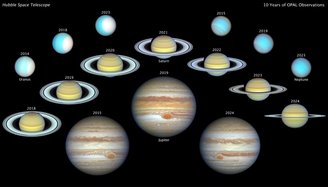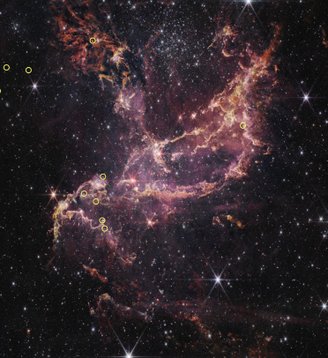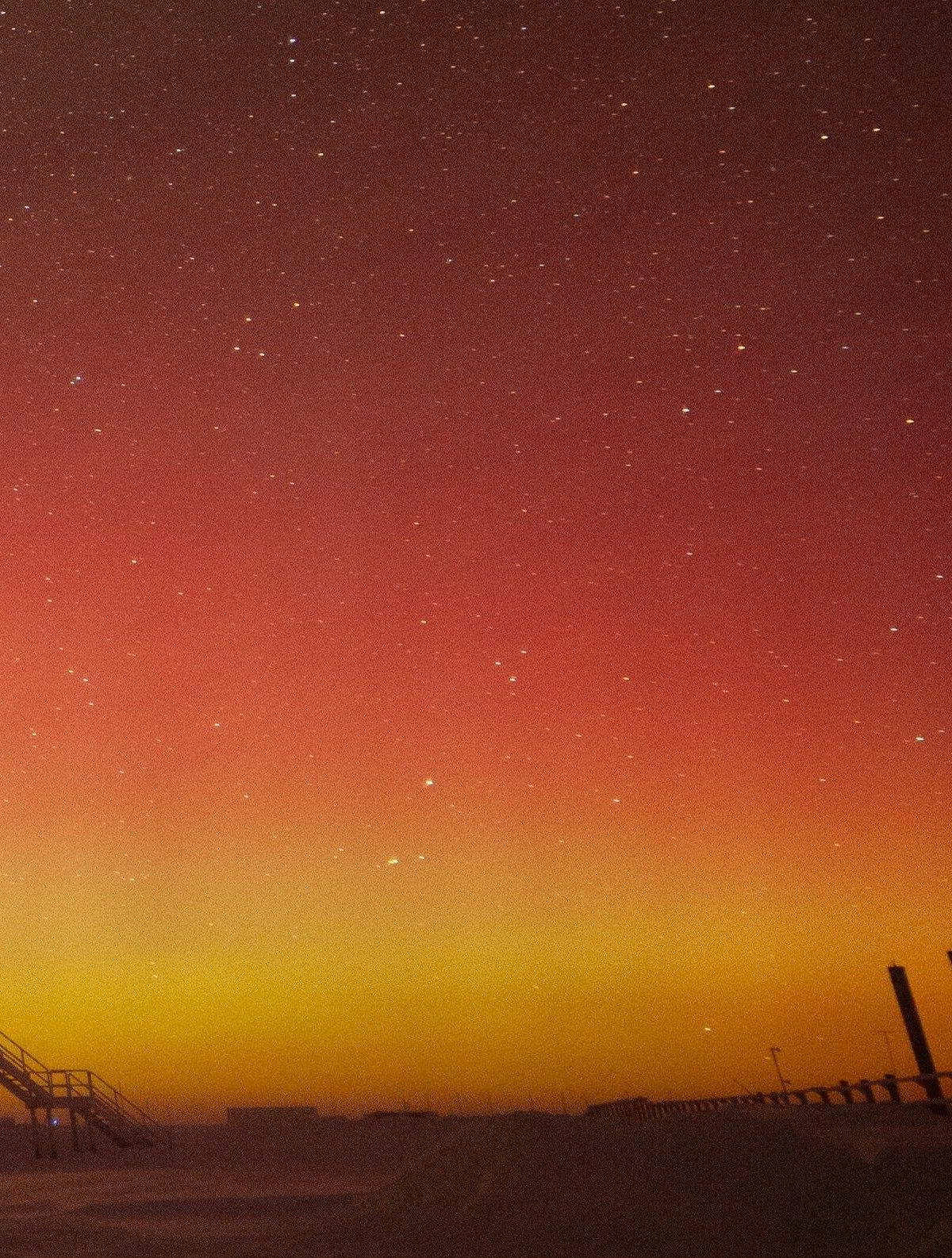The United States National Aeronautics and Space Administration (NASA), together with other international research institutions such as the European Space Agency (ESA), the Canadian Space Agency (CSA) and the Space Telescope Science Institute (STScI), Some incredible sights throughout December.
Photographs produced from data collected by the James Webb Space Telescope (JWST) and the Hubble Space Telescope offer little-known viewing angles. Cosmic events involving clusters of stars and planets in distant regions of space.
For example, one of these images shows some planets in the Solar System that have been observed by astronomers for decades. Check out this and other images!
Aurora Australis in Antarctica
During December, ESA has released an image of the aurora australis from the Concordia research station in Antarctica, showing all the beauty of the night sky with lights varying between shades of red, orange and yellow.
This phenomenon occurs due to the interaction between charged particles from the Sun, gases in the Earth’s atmosphere, and the Earth’s magnetic field. Although the photo was submitted in December, the European Space Agency explains that the capture occurred in May 2024, during solar maximum, one of the phases of the solar cycle that occurs on average every 11 years.
Aurora australis is a phenomenon known to occur in Earth’s southern hemisphere, while in the northern hemisphere it is called aurora borealis. Both are classified as polar auroras, which are events that occur near the planet’s magnetic poles.
“Concordia is one of the most remote places on earth; The closest humans on the Vostok station are 600 km away, making it more isolated than the International Space Station. “The station is a unique platform for research in fields such as astronomy, glaciology and human physiology,” explains ESA.
Outer planets of the Solar System
NASA and ESA have published a publication to celebrate the tenth anniversary of the discovery of the Solar System’s outer planets. An incredible image showing different versions of Jupiter, Saturn, Uranus and Neptune. The data represents information collected by the space agency between 2014 and 2024.

In the official statement, ESA says Hubble Space Telescope is the only telescope capable of providing high-resolution information for research It’s about atmospheric motion, the color of clouds, the mechanics of weather systems, among other characteristics of these planets.
“Another advantage of Hubble is that ground-based observatories cannot see Jupiter continuously for two Jupiter rotations, which is a total of 20 hours. During this time, a ground-based observatory will have come into daylight, and Jupiter will no longer be visible until the next night.” It is explained in an official publication.
Star cluster NGC 346
In a December publication, NASA, ESA and CSA presented data from the James Webb Space Telescope (JWST) to investigate a mystery identified by the Hubble Space Telescope in 2003. Finally, How could a huge planet form around a very old star in an environment where heavy elements are scarce?
The discovery attracted the attention of scientists; because traditional planet formation models did not predict the emergence of giant planets in metal-poor regions.

The JWST data strengthens evidence put forward by Hubble more than 20 years ago when observing the NGC 346 star cluster in the Small Magellanic Cloud. Astronomers have confirmed that some stars between 20 and 30 million years old have retained active protoplanetary disks for much longer than previously thought.
This discovery suggests that planets could even form in conditions similar to those in the early universe and challenges traditional theories of planet formation. Scientists claim that These data expand our understanding of how giant worlds can arise in environments with few heavy elements.
Did you know that some auroras can be seen even in super isolated areas like Antarctica? Are you wondering? Take the opportunity to understand how the “lights in the sky” phenomenon happens. Until next time!
Source: Tec Mundo
I’m Blaine Morgan, an experienced journalist and writer with over 8 years of experience in the tech industry. My expertise lies in writing about technology news and trends, covering everything from cutting-edge gadgets to emerging software developments. I’ve written for several leading publications including Gadget Onus where I am an author.













